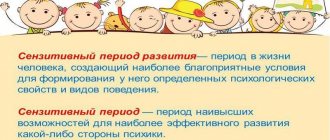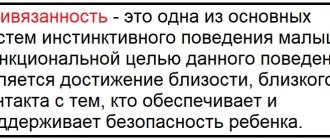What is my doll afraid of? Projective technique for diagnosing children's fears
Bibliographic description:
Gordeeva, M. S. What is my doll afraid of? Projective methodology for diagnosing children's fears / M. S. Gordeeva. — Text: immediate // Pedagogy today: problems and solutions: materials of the II International. scientific conf. (Kazan, September 2020). — Kazan: Young scientist, 2020. — pp. 21-23. — URL: https://moluch.ru/conf/ped/archive/270/12880/ (access date: 10/08/2020).
We all know the feeling of fear. It's a feeling you can't get used to. But if an adult is scared, then a child is doubly scared. Scientists, teachers, and parents note the diversity of children's fears. A child is afraid of a monster in the closet, a dark staircase to the basement, Baba Yaga, monsters from cartoons and fairy tales, everything that will make an adult smile. Or it may be that he will simply dismiss the child, saying that it is all fiction. Yes, most of our fears have age-related characteristics, but if this fear is not overcome at the right time, it can become much deeper and have much more serious consequences.
The problem of children's fears has been relevant for many years. It is studied by doctors, psychologists and teachers. This topic is discussed by such scientists as A. I. Zakharov, V. A. Averin, M. V. Osorina, J. Bowlby, it is often touched upon at various forums and conferences, and especially often it can be seen on the Internet or heard in questions parents.
Fear, anxiety, worry are all natural emotional manifestations of a child’s mental life, but excessive compliance with fears can develop self-doubt, nervousness, and over time interfere with the child’s normal activities, adaptation in a team, and self-development [2, 3, 4]. One of the reasons that causes children's fears may be the anxious environment in which the child is forced to find himself [3, 4]. And the baby is not always able to cope with them on his own, especially in dysfunctional families.
What is a dysfunctional family? Without touching on many subtleties and cases, we can say that this is a family where there is no contact between parents, or parents and children. Most often this is a conflict family. In it one can observe the indifference of parents to the child, pedagogical illiteracy, reluctance to understand the child and satisfy, first of all, his psychological needs [3]. How a child will grow up largely depends on the position of the parents, which can be expressed, for example, through aggression, despotism or hypoprotection [1].
Children from prosperous families are generally characterized by age-related fears, which they experience quite successfully, without getting stuck in them, because an emotionally healthy environment in the family and contact with parents help to cope with them [3]. With fears instilled or acquired through negative experience, parents in such a family will most likely work, overcoming them together with the child. It is unlikely that the child’s fear here will be brought to a state of neglect.
But in dysfunctional families, there is little hope for the parents to “work”, due to a number of circumstances, but most often they are preoccupied with personal problems. Such families can also include a divorced family. Let's take this example: a girl Masha, 3.8 years old, that is, almost 4, is afraid to be alone, and is also afraid of skeletons. Fears that are quite age appropriate. Mom just throws up her hands, surprised by the appearance of skeletons, and makes assumptions: “My mother-in-law probably scared me.” A month later it turns out that the parents are getting divorced and do not live together. And the following conversation occurs:
Dad walked us with Masha and her mom to the cafe and left, mom went to the cashier, and Masha said: “And dad flew away.”
Me: Why did you fly away? Probably left?
M: - He is a big bird. Scary, I'm afraid of birds, she'll grab me and fly away.
Mom returned. When asked where dad had gone, in the hope of repeating what was said to her mother, Masha began to smile, and, saying that dad had gone home, hid under a chair. She clearly had no desire to share with her mother, and her mother became increasingly interested not in the child, but in how to arrange her personal life after the divorce, having a daughter.
I think that here you can see how an unfavorable family environment affects the girl. The fear of animals remains, and, moreover, the scary animal is associated with the father, who will “grab it and fly away.” Maybe the skeleton appeared for a reason?
Here we can also mention that “emotionally warm relationships with both parents are possible only in the absence of conflict between adults, since at this age children, especially girls, are very sensitive to family relationships. The authority of a parent of the same sex decreases due to behavior that is emotionally unacceptable for the child and the inability to stabilize the situation in the family” (A. Zakharov) [3].
When working with children, it is necessary not only to take into account the age and personal characteristics of each child’s fears, but also to try to help him cope with them. This is necessary to maintain the moral and mental health of the baby. To work with children's fears, various quite popular and proven correctional techniques are used, which are used by both psychologists and teachers. They represent such types of corrective influence as drawing [3], game [5], conversation [4], test [3], fear therapy [6] and others. But before you do correctional work, you need to find out what exactly the child is afraid of. There are different methods for identifying fears. For example, a modified conversation by A.I. Zakharov [3]; projective technique “My fears” by A. I. Zakharov [6]; "Fears in the Houses" Methodology of M. A. Panfilova [5].
But, unfortunately, these methods are not always effective. The child is forced to interact with an adult, and perhaps even with an unfamiliar adult. This situation can confuse not only the child, so it is difficult to talk about frankness and openness of the conversation. All this prompted me to come up with the idea of coming up with a way to diagnose children’s fears, where the child would not have to “open up.” This is how an experimental, original technique appeared, which I called very simply - “Doll”.
In a group of children (8 people from 3 to 7 years old) staying in a social rehabilitation center for minors, a lesson was held where the children made faceless dolls from threads and felt, with the help of a teacher. Then, the children were told a rather sad story about a lonely doll who has no friends at all. Of course, every child immediately wanted to become a friend to “their” doll. And then the children were offered the following “task”: like a real friend, take the doll with you to play, sleep with it, and, if possible, find out from the doll whether it is afraid of anything.
During the week, the children did not part with their dolls, slept with them, and after the appointed time had passed, they could share what the Doll “told” them during this time, what was she afraid of? The idea of this technique also arose for the reason that it was not possible to get closer to the children before confidential conversations (the class was held once a week). And the idea with the idea of the Doll was that a child who has difficulty talking about his fears would perhaps talk about the Doll’s fears, as if projecting his fear through her. The result was positive. The children actually talked about what the Doll shared with them, almost immediately forgetting themselves and switching from “she’s afraid” to “I’m afraid,” which suggested that the fear still belonged to the child and was not invented for the doll.
I would like to give a few answers from those children who talked about their “Dolls”. They all answered the question asked of them: “What did your Doll tell you about? Is she afraid of anything?
Aurora: - The doll is afraid of dolls.
Aurora, 3 years 6 months, speaks very poorly, she started talking only a few months ago, thanks to the work of a psychologist. Unexpected fear, given the child's age. It can be assumed that this is not the fear of unfamiliar adults, characteristic of children aged 1–3 years, and not the fear of loneliness, but, in fact, the fear of other people/children.
Olya: - My doll is afraid of the dark. It's dark there and she thinks there are monsters in the dark. But when it’s light, then no (not afraid). You can take out a flashlight and look there (into the darkness).
Olya, 6 years old. The fear of the dark is, in essence, the fear of death characteristic of this age. But she knows and can use ways to overcome her fear.
Lesha: - She is afraid when she is hit, but she loves when she is respected. She also doesn't like being hit.
Lesha, 6 years old. A very active, emotional boy, with obvious leadership traits, but this is not the first time he has been “returned” by families who tried to adopt him. Mom visits periodically and does not try to defend her son’s rights. Lesha is very attached to his mother and sister and constantly draws them. It’s hard to judge anything from one sentence, but perhaps it’s the fear of physical punishment from authoritarian parents.
It is still difficult to talk about the effectiveness of this method, but the idea itself met all expectations. It is interesting that from children’s responses one can not only draw conclusions about the age-related characteristics of fears and the child’s emotional state, but also make assumptions about the nature of relationships within the family. I think this projective method for diagnosing children’s fears “Doll” could be further developed. She is able to help not only psychologists and teachers, but also parents in working with children. According to the plan, children initially become “attached” to the doll: they make it themselves, regret it when they hear the story, and spend a week with it. This preserves the main feature of the techniques - emotional contact. And having a playful form, the “Doll” technique “frees” a child from revelations with an adult, allowing him to talk more freely about his fears through a doll (after all, it is easier to talk about someone else’s fear than about your own). And the appearance of a new homemade toy leaves only positive emotions.
Literature:
- Alekseeva E. E. What to do if a child... Psychological assistance to families with children from 1 to 7 years old: educational and methodological manual. - St. Petersburg: Rech, 2012, 224 p.
- Bowlby John. Creation and destruction of emotional connections / Trans. from English V. V. Starovoitova, 2nd ed. - M.: Academic Project, 2004, 232 p.
- Zakharov A.I. Daytime and nighttime fears in children. - St. Petersburg: Rech, 2005, 320 p.
- Zakharov A.I. Origin of childhood neuroses and psychotherapy. M.: EKSMO-Press, 2000, 448 p.
- Panfilova M. A. Game therapy of communication: Tests and correctional games. GNOM and D, 2011, 160 p.
- Pizhugiida V. Strahotherapy and its application in the correction of fears of preschool children // Maam.ru [electronic resource] - Access mode: https://www.maam.ru/detskijsad/strahoterapija-ie-primenenie-v-korekci-strahov- detei-doshkolnogo-vozrasta.html, - free, access date - 03/23/16.
Key terms
(automatically generated)
: child, fear, family, parent, adult, doll, doll, mother.










